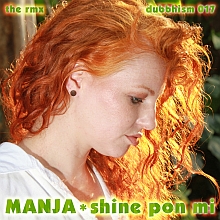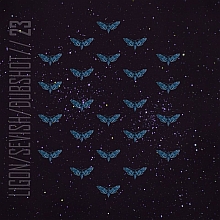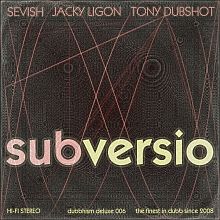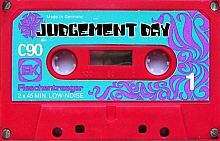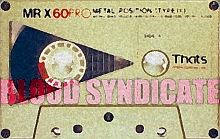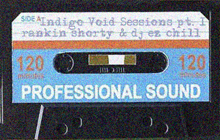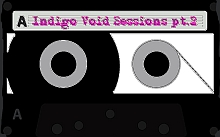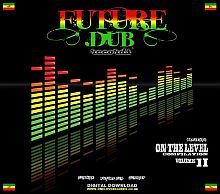
The claim: the universe is made of dynamic octave relationships. These particular octaves should not be thought of as whole number ratios (the Pythagorean octave concept) but as moving patterns or scenarios. These octaves are the key to all mysteries of the universe. If you know what to look for, you'll start seeing them everywhere.
The evidence: musical arguments
In 1980 the very famous Dutch writer Harry Mulisch published his worst-selling book ever, a pseudo-philosophical treatise titled The Composition of the Universe (De Compositie van de Wereld). It's an unusual mix of science, sectarianism, philosophy and musical alchemy. Mulisch actually attempts to explain the universe ~ all of it ~ in oldskool Pythagorean style using a famous musical phenomenon: the octave. But unlike that ancient Greek whole-number-ratio-fetishist, Mulisch defines the octave as a cyclic, dynamic and symmetric pattern that unfolds in time on all conceivable levels.

The original version of De Compositie van de Wereld comes with a 45. It's a recording of 2 sine waves. One sine wave holds a basic frequency while the second one makes a slow sweep of one octave starting at the frequency of the first sine wave. Here's an example.
The shifting harmonic tension between the two sine waves can be thought of as a pattern. According to Mulisch the sine wave's 'journey' from the basic frequency to its octave has 7 stages. He draws a simple cyclic symmetrical diagram based on these stages. This pattern is the master key that explains anything and everything.
 stage 1: unison (basis)
stage 1: unison (basis)stage 2: rough beats (masker)
stage 3: glissando, looking back, conservative (descendentie)
stage 4: fifth, knot (knoop)
stage 5: glissando, forward looking, progressive (destinatie)
stage 6: rough beats (horizon)
stage 7: octave, the same and not the same (apex)
Of course the pattern is well known by both musicians and scientists. Pythagoras researched it, Galileo Galilei wrote about it, and in his book On the sensation of tone Hermann von Helmholtz drew a more detailed figure of the hills and valleys of roughness and consonance.

Harry Partch called it the 'one-footed bride' and in the 1960's the Dutch psychologists Plomp and Levelt confirmed a similar pattern after researching the listening experiences of many listeners.
In De Compositie van de Wereld Harry Mulisch searches and finds this pattern~principle literally everywhere. In the origin of the universe, in the origin of life, the history of mankind and in the various systems of philosophy, to name a few examples. The methodical seriousness of his approach shows an obsessed mad scientist.
The evidence: numerological arguments
These alchemic tables of octave correspondences point in the same direction as Mulisch's theory, but in his book Synergetics, Richard 'Bucky' Fuller (a modern day Pythagoras) presents an even more interesting parallel. In the Numerology section Bucky explains how the seemingly trivial techniques of numerology can be used to analyze certain intrinsic properties of individual numbers, adding up to a number-system of a plus and minus octave. The similarity between this number-system and the dynamic octave pattern is intriguing.

Bucky points out that this deep number-system is in fact just another example of his general idea of a basic system. In Buckyspeak that's a convex/concave tetradedron with a bipoled axis of rotation. Note that Bucky's idea of a system is not a single simultaneous structure but a scenario, like the dynamic octave. A quote from Synergetics:
"1222.11 Indig congruences demonstrate that nine is zero and that number system is inherently octave and corresponds to the four positive and four negative octants of the two polar domains (obverse and reverse) of the octahedron - and of all systems - which systematic polyhedral octantation limits also govern the eight 45-degree-angle constituent limits of 360-degree unity in the trigoniometric function calculations. [in other words it's a cyclic system]
1222.12 [...] [it] provides lucidly synergetic integration (at a kindergarten-comprehendible level) of cosmically basic number behavior, quantum mechanics, synergetics, nuclear physics, wave phenomena in general, and topologically rational accountability of experience in general."

In other words: according to Bucky the numerical octave reflects a deep shit-level of universal oneness. Interestingly, his model of a system~octave looks a lot like the dynamic musical octave pattern. It's hardly surprising that the famous violinist, pianist and theoretical physicist Albert Einstein used musical analogies and structures when he conceptualized new intuitions about stuff like quantum physics.
The verdict
Harry Mulisch had his great intuitive moment when he discovered some of the hidden depths of the dynamic octave pattern, and then he wrote an unreadable book about his blurry insights. De Compositie van de Wereld is full of pseudo-science, esoteric nonsense and sectarianism. In other words, it's a must read for madd scientists. Unfortunately, it's only available in Dutch. The dynamic octave pattern is a simple, symmetric and flexible phenomenon. It's everywhere, in various disguises. If you search, you will find it, both in science and nature. In music, modern tuning theories and sound design techniques like FM are based on the acoustic properties of the dynamic octave pattern.
Exercizes
1. In his book The Hero with a Thousand Faces, Joseph Campbell uses a cyclic structure to explain his famous Monomyth (unrelated to sound reproduction). This journey of Joseph Campbell's mythological heroes can easily be made to match the sine wave's journey. Try it.
2. Robert Anton Wilson was fond of esoteric octave theories and he was especially interested in Timothy Leary's version. In Prometheus Rising, one of Wilson's most popular books, human behavior is seen through the lens of Leary's octave theory of the brain. Read it.
3. Muse about the analogies between the Möbius ring, the octave number system according to Bucky, the shape of the Yin Yang symbol, Joseph Campbell's Monomyth and the dimensions of the Great Pyramid of Gizeh. Construct an octave-based Theory of Everything.
4. The ancient Harmony of the Spheres-theory has been re-discovered and re-interpreted many times by modern science. Likewise, there's a mysterious connection between the structure of DNA and the I-Ching, an ancient Chinese numerological system. What other systems (old or new) based on the number 64 can you think of?
5. Look up the meaning of correlative thinking here and here.
4. The ancient Harmony of the Spheres-theory has been re-discovered and re-interpreted many times by modern science. Likewise, there's a mysterious connection between the structure of DNA and the I-Ching, an ancient Chinese numerological system. What other systems (old or new) based on the number 64 can you think of?
5. Look up the meaning of correlative thinking here and here.




